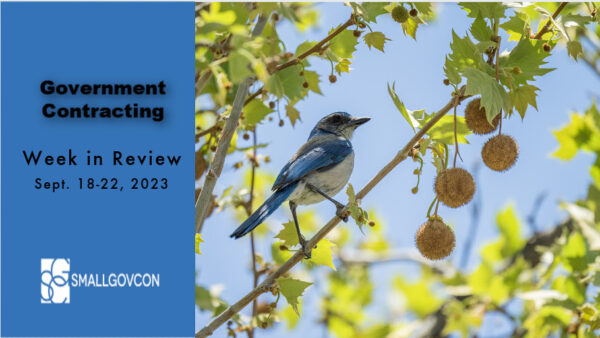One of the pillars of the SBA’s HUBZone program is the location of a company’s employees. In August of this year, SBA released an Information Notice emphasizing important points about where employees reside, and HUBZone entity’s efforts to employ the necessary amount of employees residing in HUBZone areas. While SBA’s HUBZone policies don’t have the weight of law as compared to a regulation, the HUBZone office will generally enforce this sort of guidance quite strictly. So don’t think it’s just a suggestion. As these are crucial elements of eligibility, it is important for all HUBZone businesses to be aware and reminded of SBA’s expectations.
Continue reading…Watching the Watchman – New FAR Rule Opens Door to Further Feedback on Acquisition Process
In Fiscal Year 2022, 1,595 bid protests were filed with GAO. While that seems like a large number, it pales in comparison to the number of federal contracts the federal government awards in a given year. On average, the government awards over 11 million contracts per year. That’s a lot of acquisitions that are not subject to any feedback from outside the agency. But things might change now with the new rule that the FAR Council enacted. Today, we’ll take a look at what this entails.
Continue reading…Small GovCon Week in Review: September 18-22, 2023

Happy Friday, Readers. We hope you have had a great week and are looking forward to the weekend. Talk around the proverbial water cooler, this week, has been about the possible government shut down. On midnight, September 30th, fiscal year 23 will come to an end. Apparently, if certain things aren’t passed by Congress and signed by the President, the new fiscal year will start with a shutdown, and that has a lot of government contractors nervous.
We have included some articles on this topic and other federal government news below. Have a great weekend.
Continue reading…COFC: Lapsed SAM Registration During Proposal Evaluations Makes Offeror Ineligible for Award
It’s a tale as old as time, and I’m not talking about “Beauty and the Beast.” I’m talking about an offeror who failed to comply with the registration requirements in FAR 52.204-7. What’s FAR 52.204-7? It’s the FAR provision that requires, among other things, all offerors to be registered in the System for Award Management, or SAM as it is better known. And, as we have seen many times before, there is no way around this rule. Often, failure to be registered in SAM limits an offeror’s eligibility before award is made, making the offeror ineligible for award. However, this time, it affected the award that had already been made, resulting in the court entering a preliminary injunction against the government continuing with its original award.
Continue reading…SmallGovCon Week in Review: September 11-15, 2023

Happy Friday, Readers. We hope you had a great week. We are starting to get a little fall weather around these parts, which is exciting. Fall has also brought the prospect of a potential government shutdown and what the impact will be, as reflected in some of these articles. The budget process is complicated, so we are all waiting to see how it shakes out.
We’ve also included some other articles on topics such as OASIS+ and cybersecurity, we hope will be of interest to you below. Have a great weekend.
Continue reading…UPDATE: SBA Opens Certify Portal for Social Disadvantage Narrative Uploads by Current 8(a) Participants Not Pending 8(a) Award
As we have previously written about in several recent 8(a) articles and updates, which can all be found on our 8(a) landing page here, SBA had previously told all 8(a) participants not pending an 8(a) award to “sit tight” and wait for the go-ahead to submit their social disadvantage narratives. Well, according to SBA’s just-released Certify Help Desk Guidance, it appears that go-ahead was just given to all the (justifiably) anxious 8(a) participants out there hoping to confirm their continued 8(a) Program eligibility as soon as possible.
Continue reading…Davis-Bacon Act Resurrects Old Prevailing Wage Methodology
There is a saying that sometimes to go forward, you have to go back first. In August, the Department of Labor (“DOL”) published a final rule that will update the Davis-Bacon Act, with some methodologies previously abandoned. Unsurprisingly, this final rule focused on enforcement of labor standards, and was quite lengthy (numbering in the hundreds of pages). Despite it’s voluminous size, there was one major change that federal contractors will find of interest, a change to the method of determining prevailing wage. That is the focus of this post.
Continue reading…